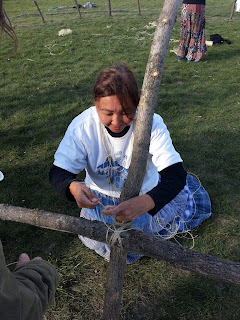Leadership Racine kicked off its 15th class this
past September and as I spoke to the new group of participants, I reflected on
my involvement over the past fifteen years.
 From a participant in that first class to advisory board
chair, I have done everything from schlepping soda to presenting. In between I have served on the program and
selection committees, helped revise the program after that first year and
supported the program with my “time, talents and tithes”.
From a participant in that first class to advisory board
chair, I have done everything from schlepping soda to presenting. In between I have served on the program and
selection committees, helped revise the program after that first year and
supported the program with my “time, talents and tithes”.
Over sixteen years ago, a small group of community leaders
began asking the question, “Who would take over when we are no longer
involved.” Perhaps they sensed their own
mortality. Maybe they had grown
tired. Or quite frankly, they were ready
to pass the baton. Whatever the reason,
they asked the question but didn’t like what they saw. There were no runners coming up from behind.
A vision was cast that day and a program was created to meet
the needs of our community.Leadership
Racine was placed in the Racine Area Manufacturers and Commerce (RAMAC) and
with support of United Way and the Racine Community Foundation, along with
several major corporations, a net was cast to reach the broadest of
audiences. Diversity was a key goal and
one that was easily met.
What is unique about this next generation of emerging leaders is that they come from all walks of
life-transcending racial and socio-economic barriers. They work in the private sector, the public
sector and for non-government organizations.
Some own businesses while others still live at home. They are young and old, rich and poor, black
and white but none of that mattered because they were a part of a shared
experience called Leadership Racine.
Over the past fifteen years, each class has worked together
for nine months, learning about themselves and about others. They are taught leadership skills, exposed to
various community leaders and organizations and complete a team project. But most importantly, they are united by a
desire to make this community a better place.
As I spoke to the new class this year, I mentioned three
things:
1.
If they want to see servant leadership in
action, watch Karen Bayer. Karen Bayer
is the Executive Director of Leadership Racine and has quietly guided the
program from the beginning, mentoring many who have gone through. She is part den mother, part task
master. With her bell she keeps the day
moving but more often, she quietly leads from behind. Whether its an encouraging word or a hug,
Karen has a way of influencing people and engendering support.
2. A marker of success for Leadership Racine is the
buy-in from the graduates of the program.
Not only is Karen Bayer a servant leader but she is highly
relational. This has benefited the
program immensely over the years. LR
graduates enjoy working with Karen. She
empowers them to lead, encourages them in their strengths and supports them
from behind.
Although Leadership Racine was started by a group of community leaders,
there are only two founding board members still involved with the program. The bulk of the work is handled by Leadership
Racine alumni who cheerfully serve on the various working committees. For example, LR grads on the “Program”
committee plan each session and then volunteer their time to assist the day of
that session. In between they meet
monthly to plan and evaluate each session.
3.
Finally if you look around our community, you
will notice that almost every board, committee or commission has at least one,
if not more Leadership Racine alumni serving on it. Some alumni have run for office, serving as
elected officials. Others are appointed
to positions. Overall, there are fresh
faces serving in a leadership capacity and no longer is there that fear that
there is no one to pass that baton to.
That day over sixteen years ago, these community leaders,
many who will remain as icons in the history of Racine, casted a vision and
Leadership Racine was birthed out of a desire to train up a new generation of
leaders. Fifteen years later, that torch
has been successfully passed and a new generation of leaders has emerged within
our community.











